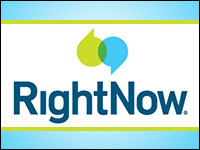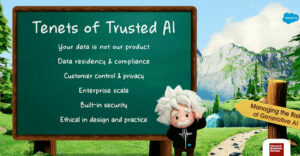
With more than 500 million people on Facebook and more than 140 million tweets per day, it’s clear that a new breed of consumer has emerged. This new breed — the social consumer — is more connected, more vocal and has greater control. Social consumers use social media to voice their praises about a particular business, but they use social media just as frequently to voice their concerns and anger about customer experiences.
Because of this, businesses today are facing a dilemma. How do they appropriately reach new customers? How do they maintain the relationships they already have? Even more important, how can they truly understand the social consumer unless they embrace the concepts themselves?
These businesses need to become social. They need to tightly integrate social tools with business processes that allow for deeper levels of collaboration across company boundaries, making the process of supporting customers and building loyalty easier and more effective. With this new way of engaging with customers though, the underpinnings of “traditional CRM” need to evolve.
Businesses need to account for this new breed of social consumers, and not just by asking consumers to “Like” them on Facebook. The ways consumers interact, how they form relationships, how they make decisions, and how they purchase goods are fundamentally changing.
Consumers in Charge
Social consumers now wield unprecedented power over how brands are perceived. As a result of all this, the world finds itself at a transformative point with regard to how business is done. The explosion of mobile devices, social networking, and new cloud delivery models have paved a unique way for industries to transform.
Consider that by 2015, one-third of spending on new CRM software will be SaaS, according to Gartner.
Worldwide spending on social software to support sales, marketing and customer service processes will exceed US$1 Billion worldwide by 2013, the firm predicted.
With SaaS and cloud computing technologies, businesses today can connect directly with prospects and customers in an instant, using intuitive Web-based tools to share information.
With access to social data, businesses can better understand the changing nature of their relationships with their customers. Businesses realize that they no longer have the type of control over their customers that they’ve had in the past. Fluffy advertisements, merchandise sales and deep discounts are no longer the preferred tactics to sway a consumer who might be on the fence about switching brands.
Instead, consumers are in the driver’s seat, making purchasing decisions after viewing polling ratings from social sites about particular products and brands. They take into account the variety of experiences other consumers have had at particular businesses.
So, in order to truly satisfy the social consumer, CRM must move beyond the straightforward, strategic tactics businesses use to organize, automate and synchronize processes in order to find and win new clients.
The Promise of CRM
Today, CRM must include new, innovative ways businesses can interact with their customers and potential prospects. CRM must become social; it must take into account the ways people communicate and interact via cloud, social media and social networking sites.
Using new models such as cloud computing, social CRM enables a more seamless experience between the business and the customer. For example, a sales agent can instantly connect with key prospects using a cloud platform that is integrated with a CRM app to quickly and easily share important files and information with a few simple clicks.
The true value of social CRM provides businesses with the right information at the right time on what their customers are going to say and do. In order to effectively retain and gain customers, which is essentially the promise of CRM, businesses must embed social capabilities and social data into their CRM systems.
At its core, social CRM focuses on the relationship, rather than the traditional CRM processes of just managing and storing a customer’s information.
Embedding a customer’s social data into a CRM system isn’t enough, though. Businesses need to get deeper. In order to be truly successful at social CRM, think about the following questions:
- Which social networking/social media sites do your customers frequent?
- From your customer’s perspective, what are their main goals for using social media and social networking tools?
- How has their preference in being contacted by businesses/marketers evolved?
Once the groundwork is laid, the relationship building or rebuilding can begin.















































Hi and thanks for the great sCRM piece. In your opinion, what are the most common (or easiest) examples of "incorporating social data into your CRM systems"? As a traditional CRM analyst, I’m keenly interested in how to marry social and digital with traditional efforts – where is the "low-hanging fruit" for social data and CRM?
Thanks!
Dean